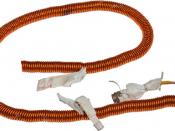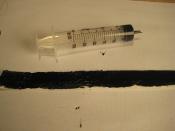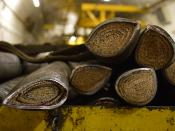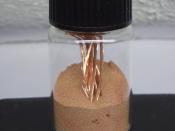Preliminary Test
I am going to perform a preliminary test to investigate if the material of a wire affects its resistance.
I think the type of material will make a difference because the electrons have to pass through the material. These electrons find it easier to pass through some materials than others. In this experiment I am going to use copper and nichrome wire. I predict that the nichrome wire will have a higher resistance than the copper wire. I can say this because I know that the electrons have to squeeze together more in order to be able to pass through nichrome wire than they do in order to pass through copper wire. (The more the electrons bump together, the higher the resistance).
Apparatus:
Ruler
Copper wire
Battery pack
Nichrome wire
Crocodile clips
Ammeter
Voltmeter
Aluminium wire
Step 1: I am firstly going to set up my circuit as demonstrated.
I am going to attach the copper wire to begin with. It is important to remember to connect the ammeter in series and the voltmeter in parallel.
Step 2: Once the circuit is connected up correctly and the clips are set to the right measurements, I will switch on the battery pack and record the readings. I will try to get my results as accurate as possible by waiting until the readings are stable and no longer flickering.
Step 3: I am going to repeat this experiment for the copper and aluminium and record my finds in a table. I will do this three time for each of the wires to find the average result.
Step 4: I will use these results to help me calculate the resistance for each different material of wire. I will use the formula R=V/I to do this.





